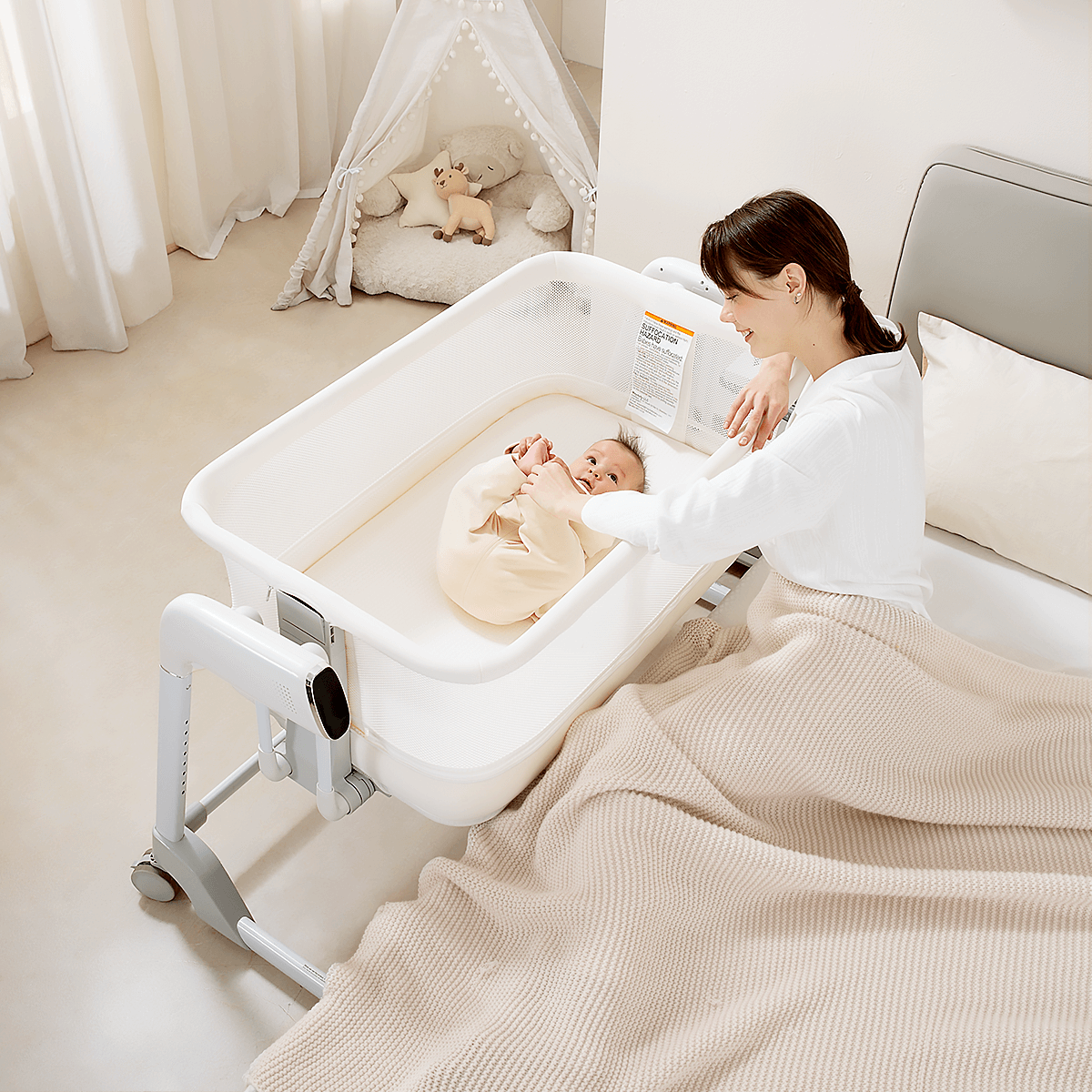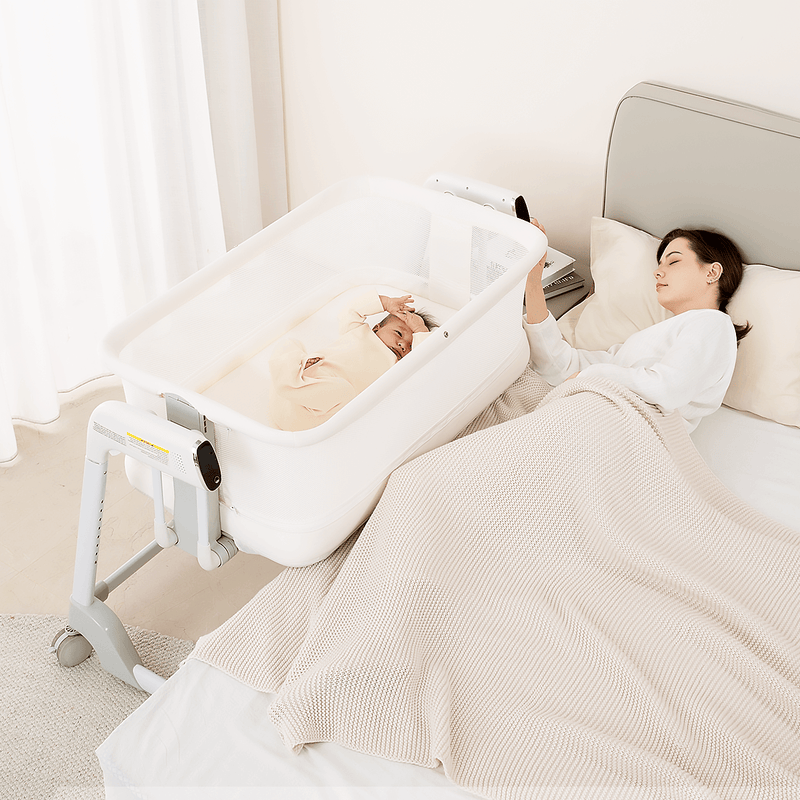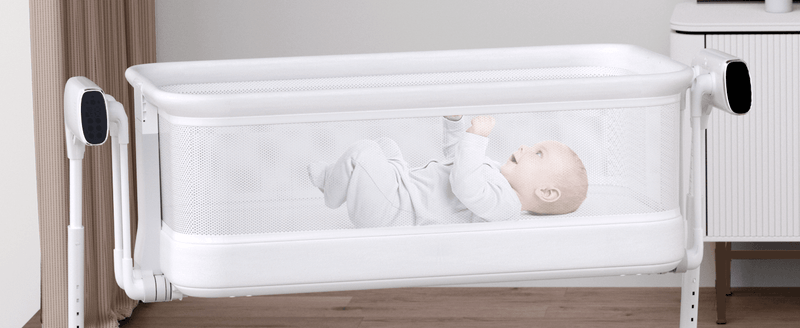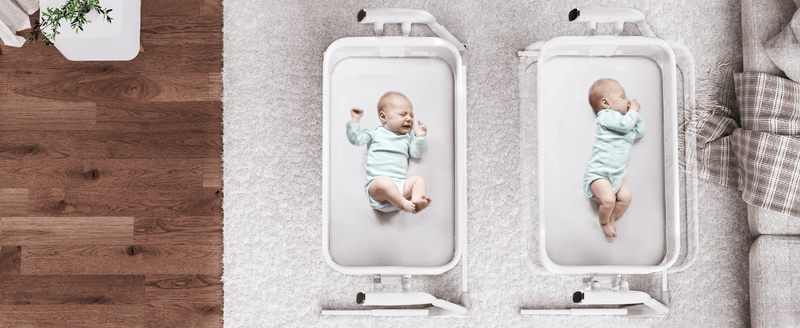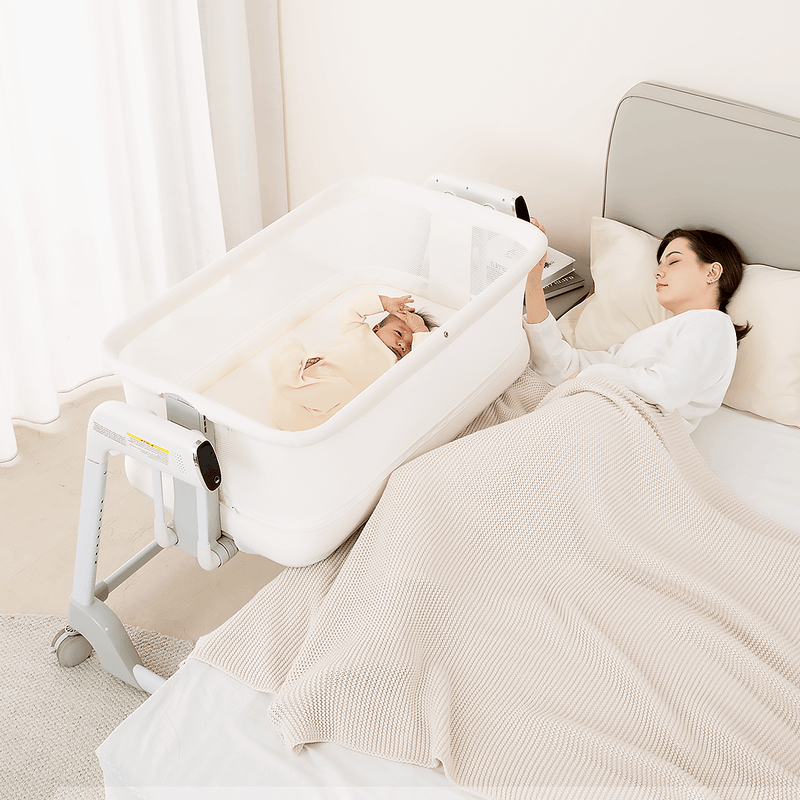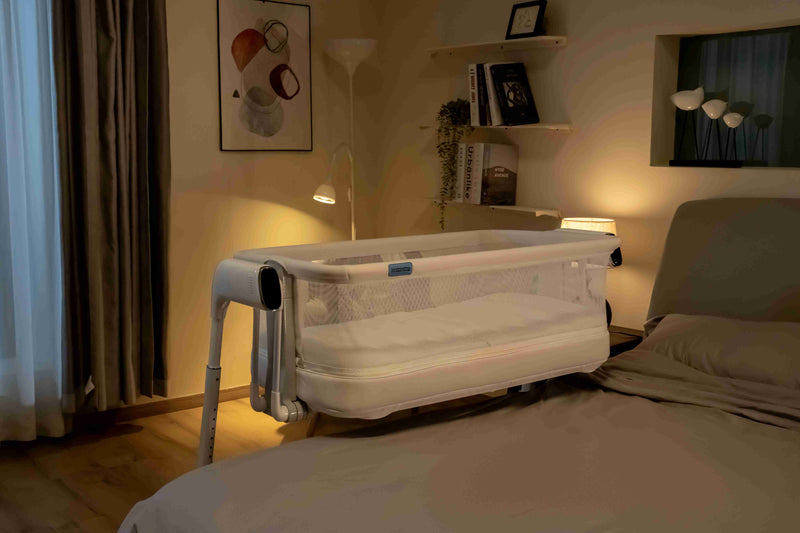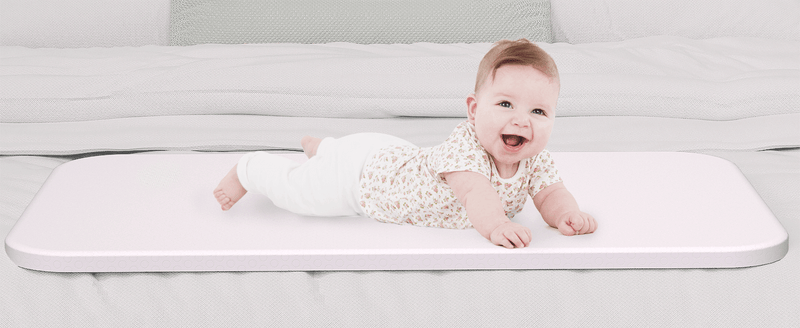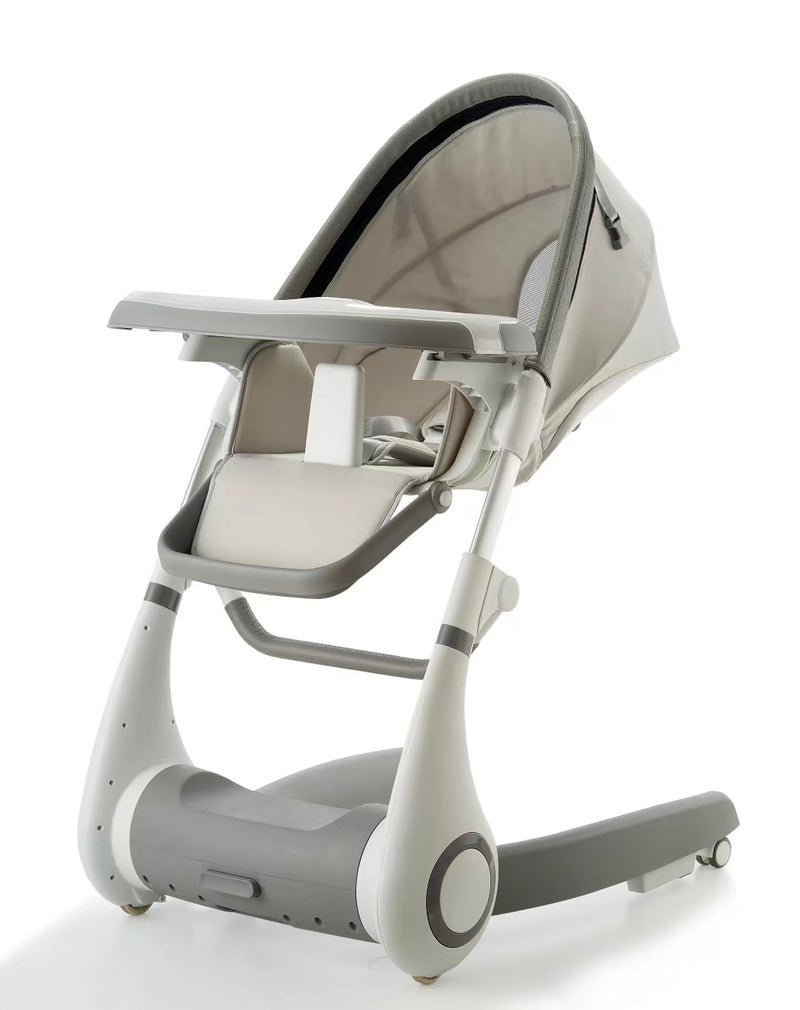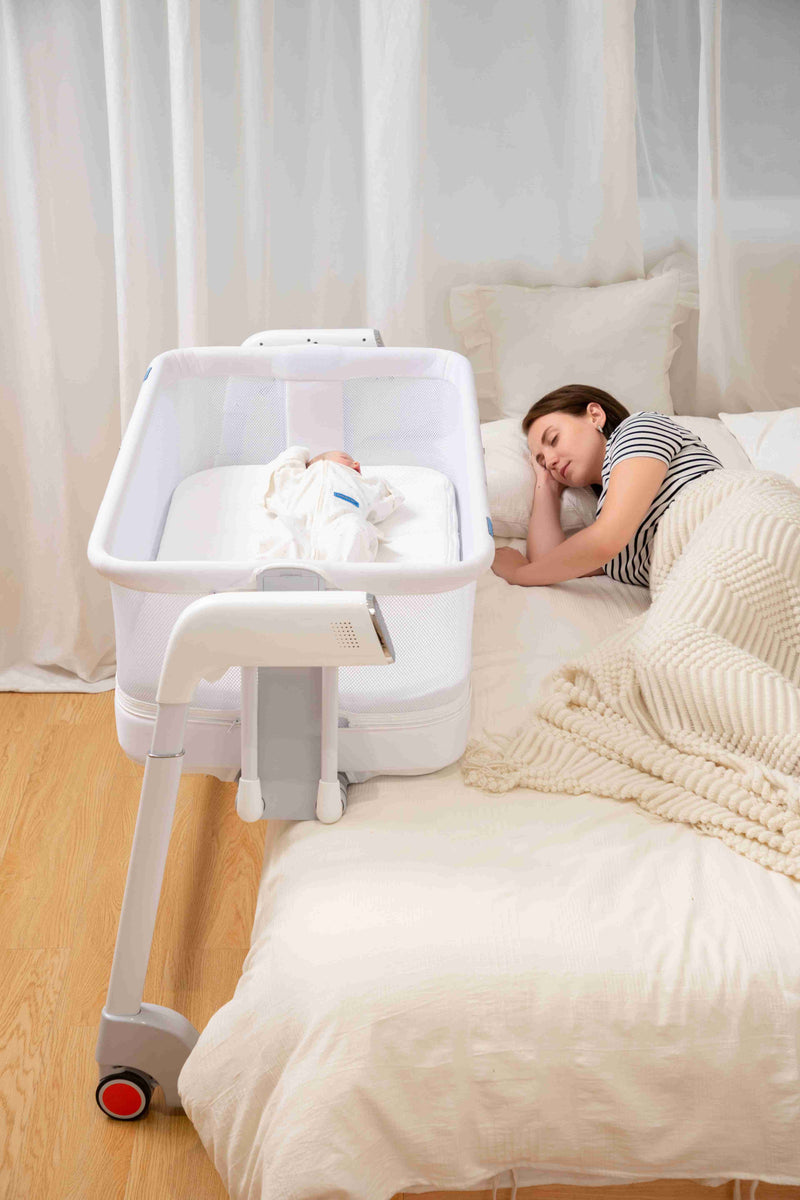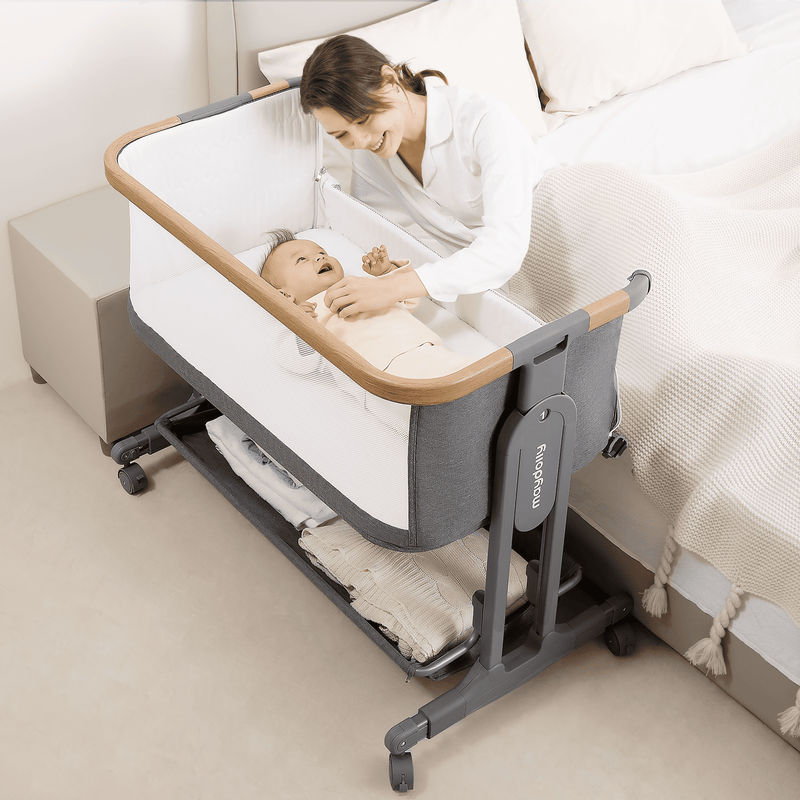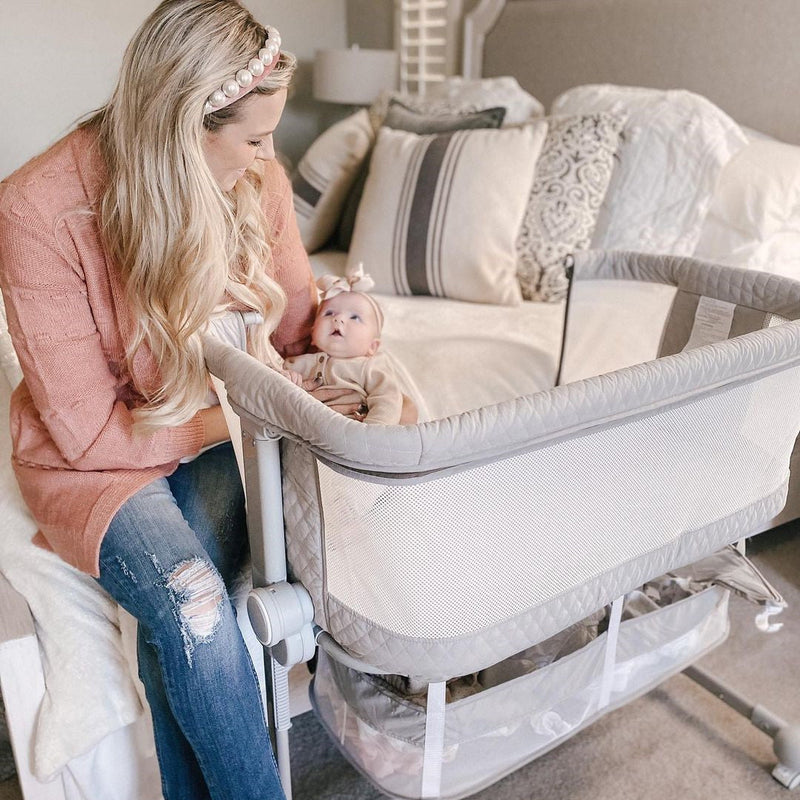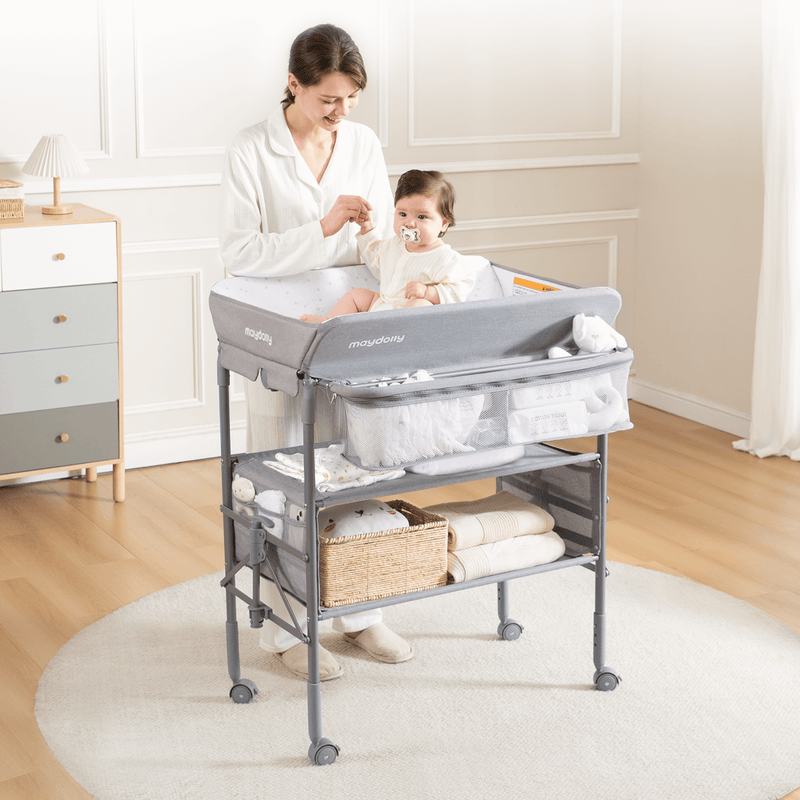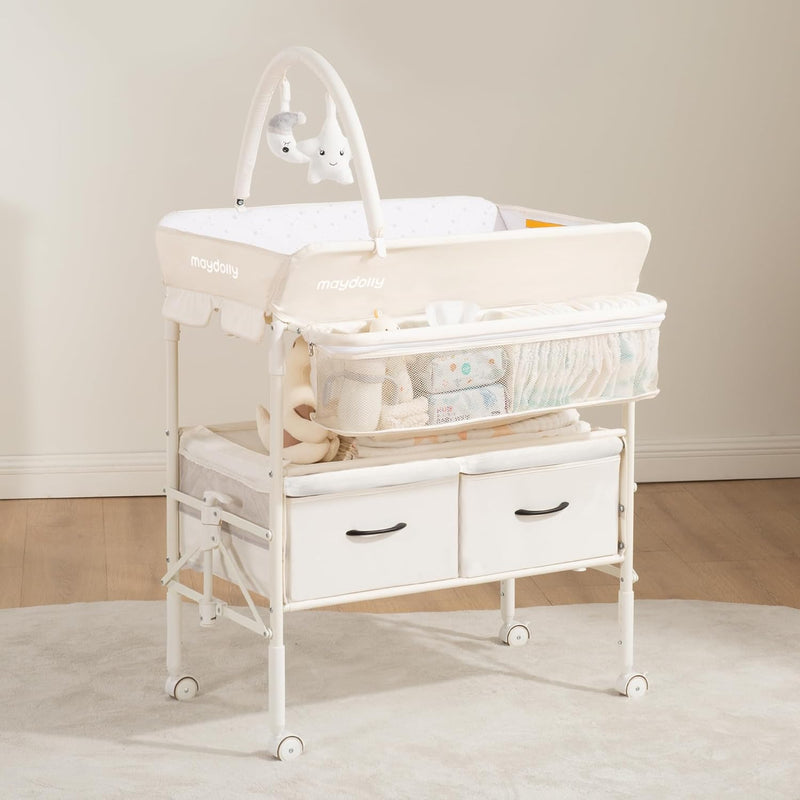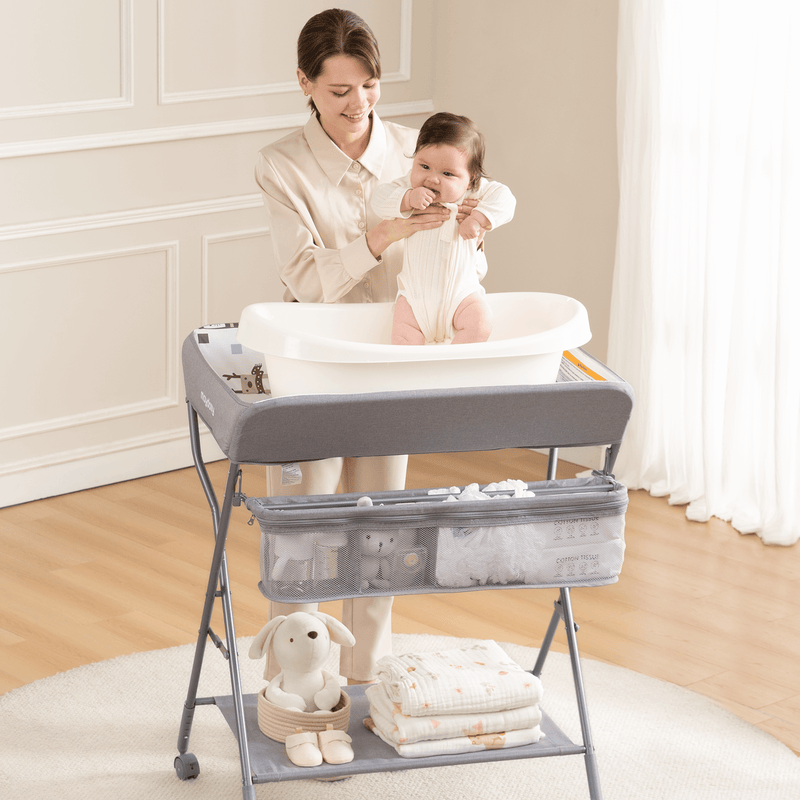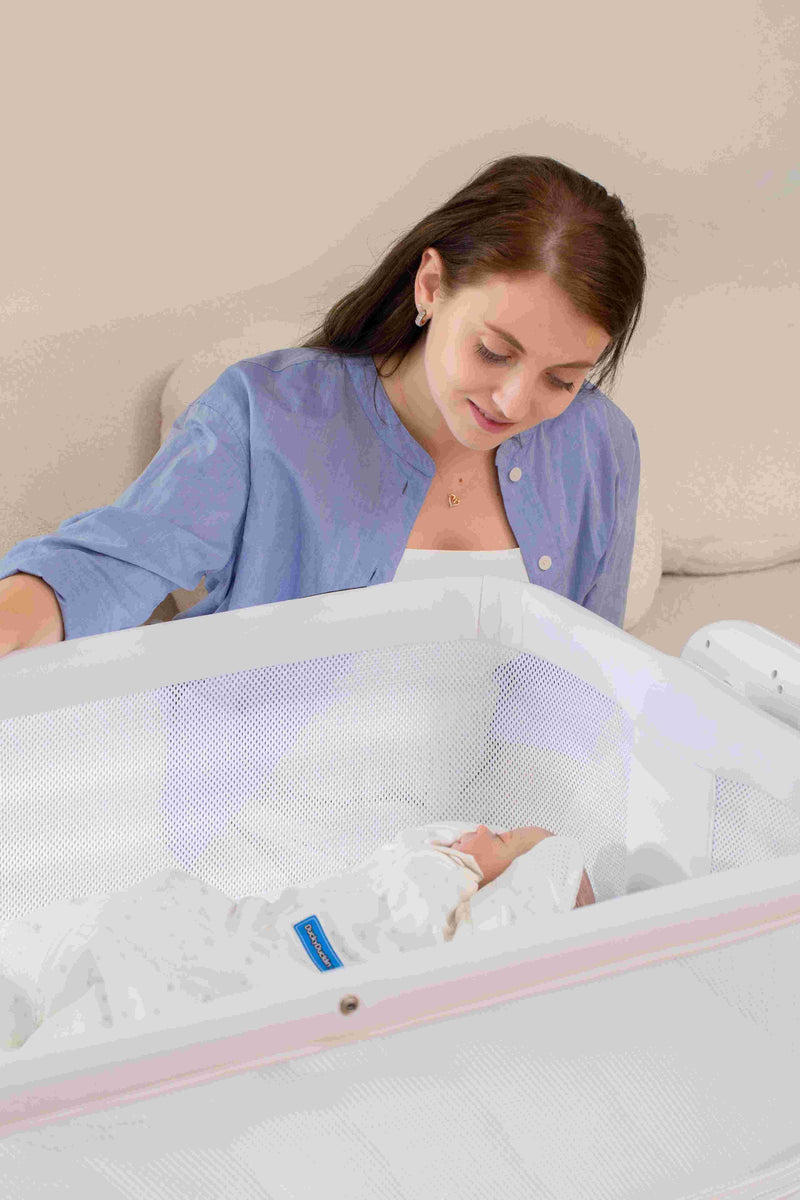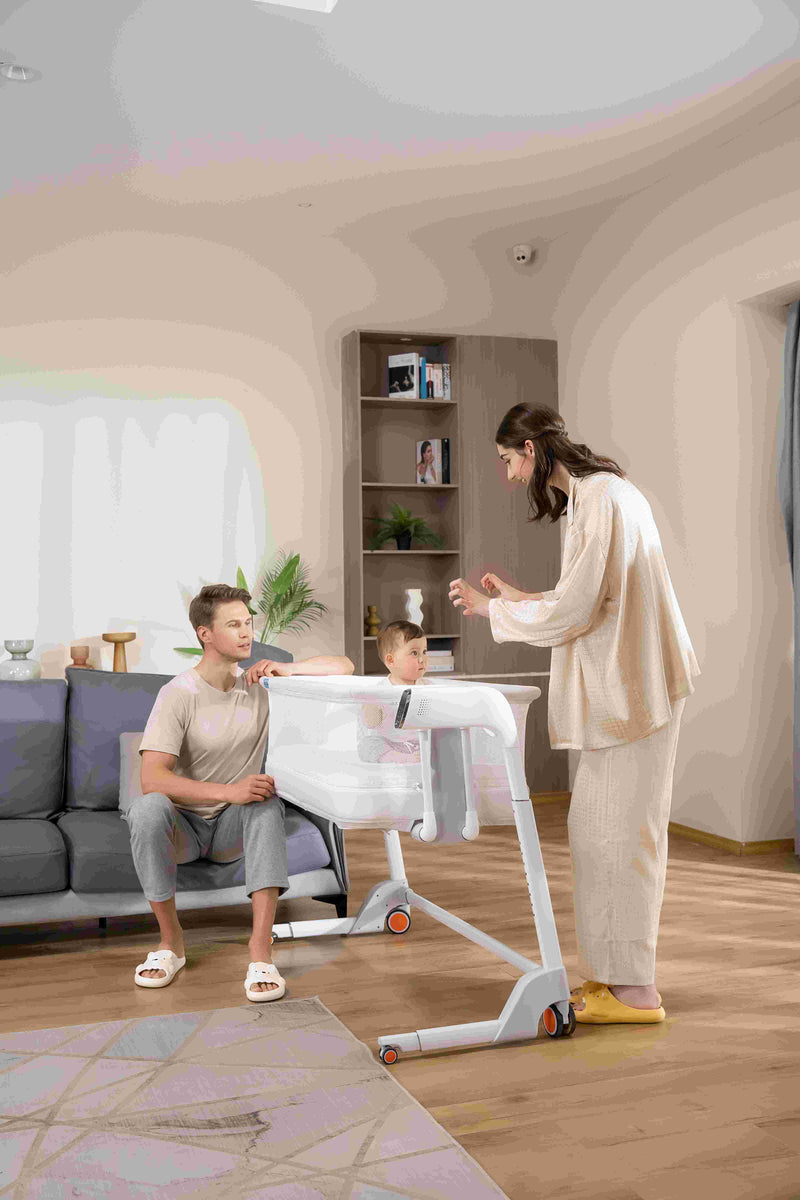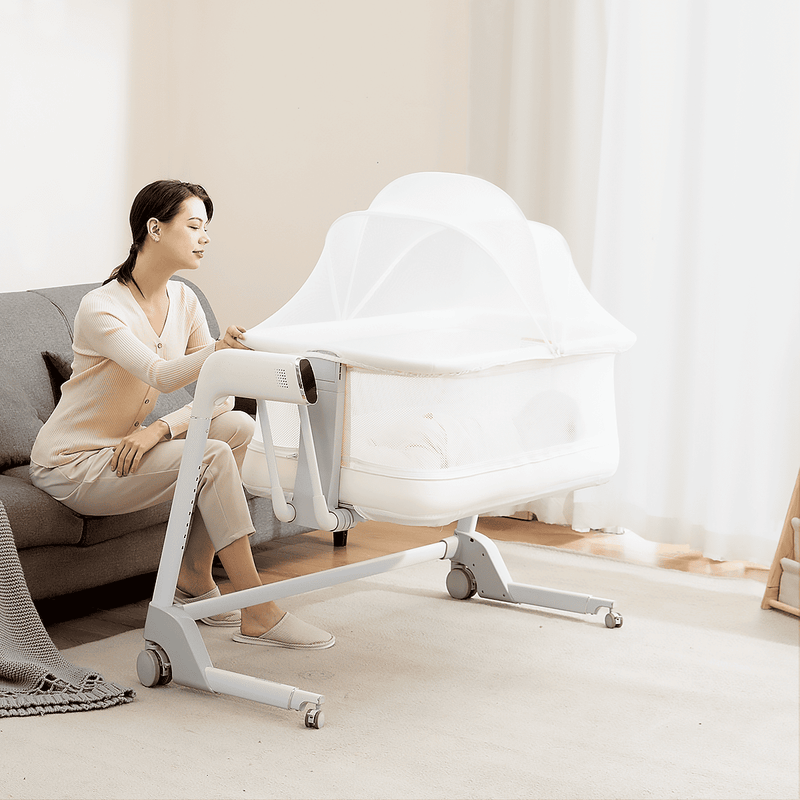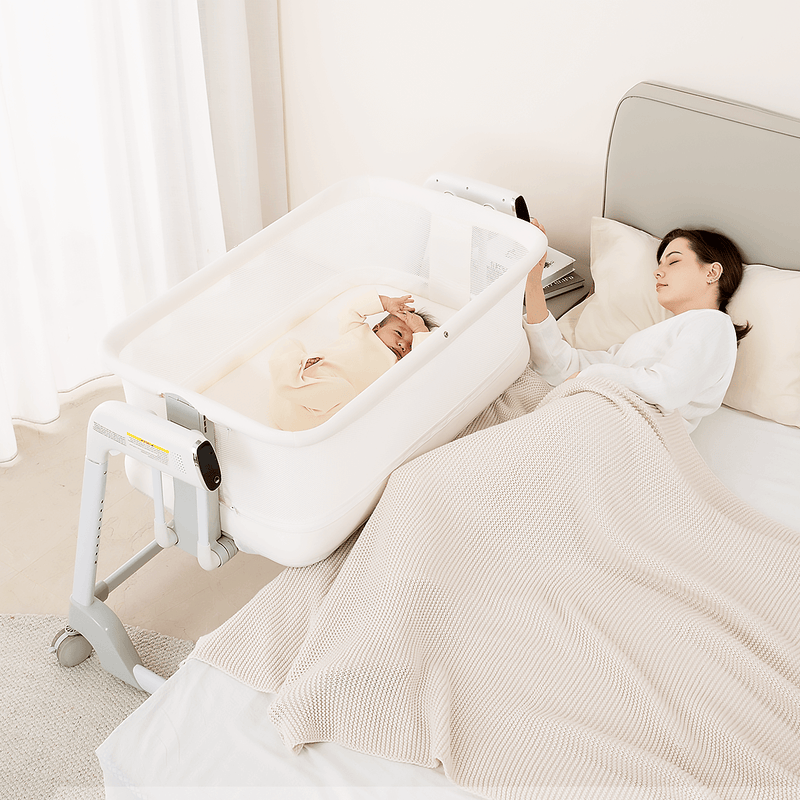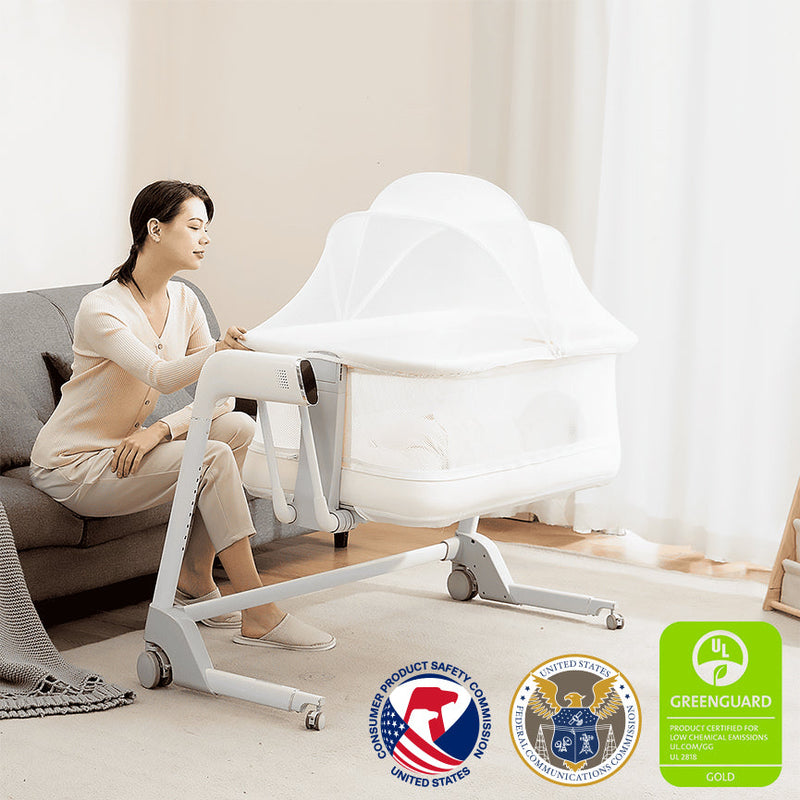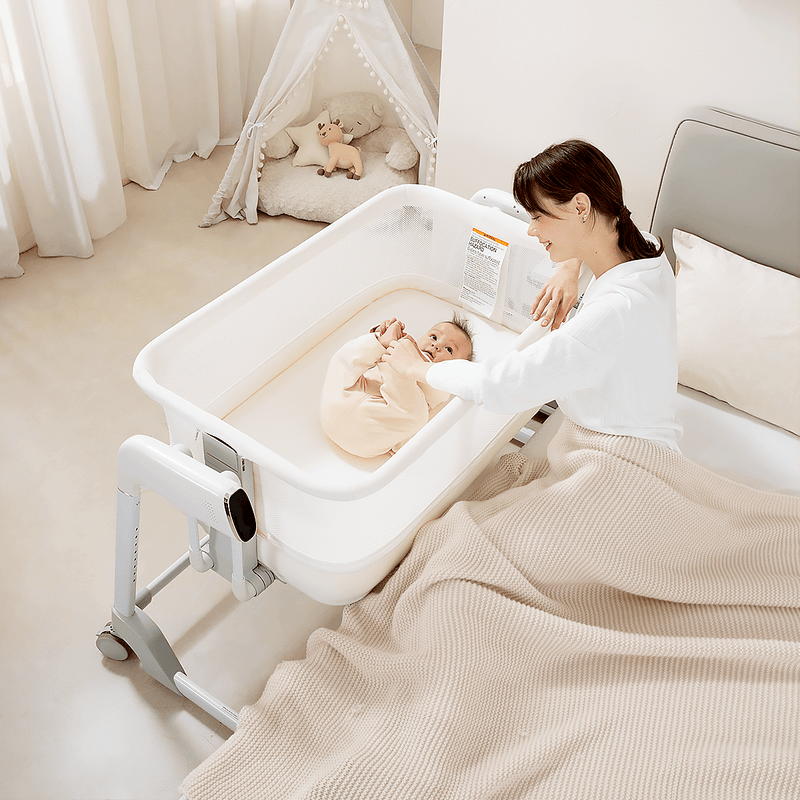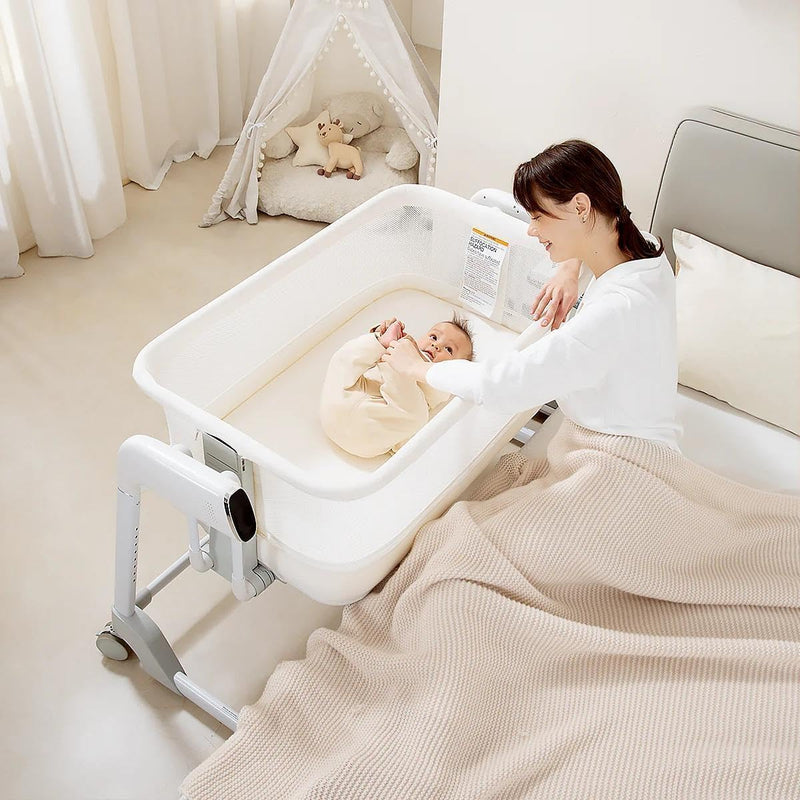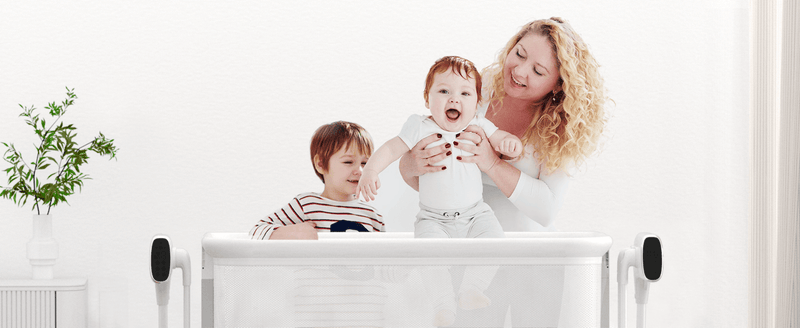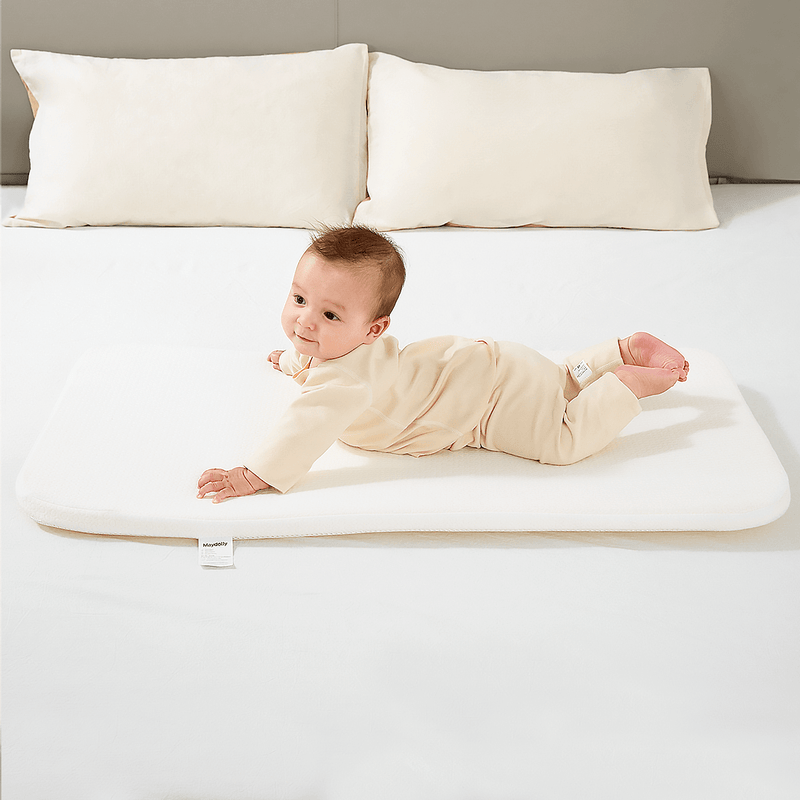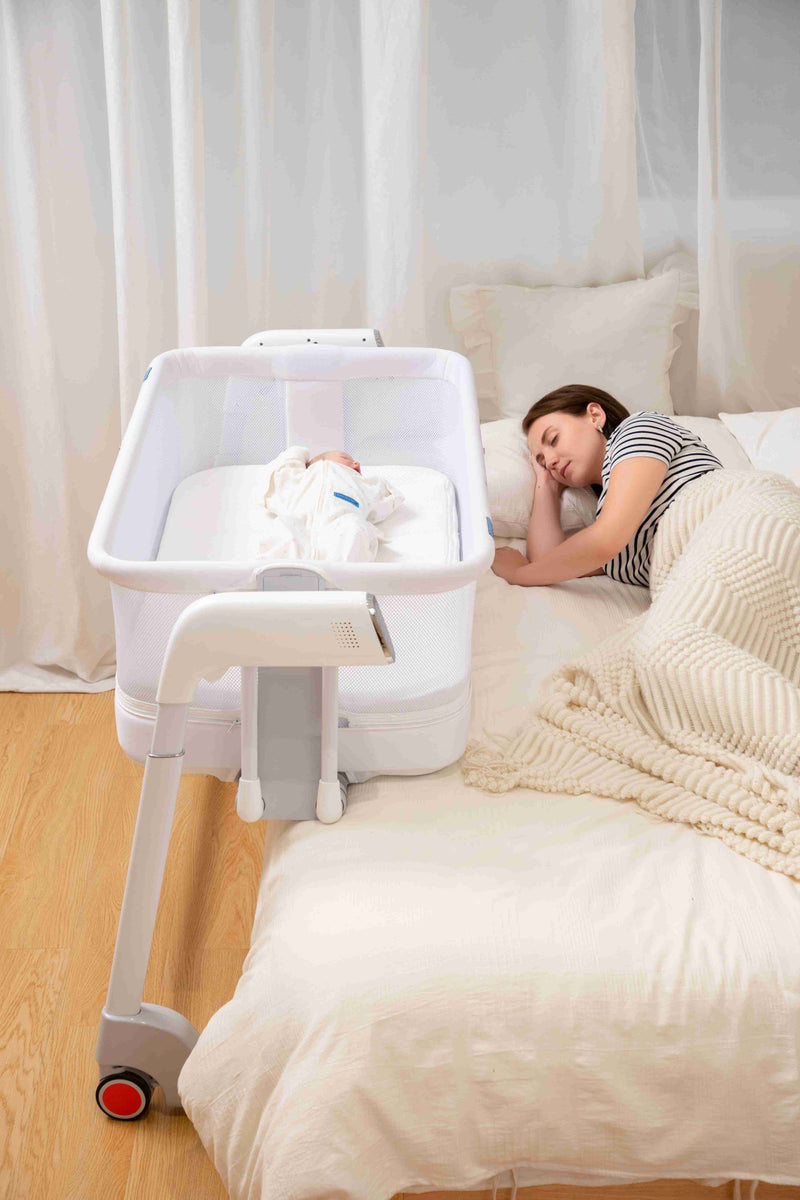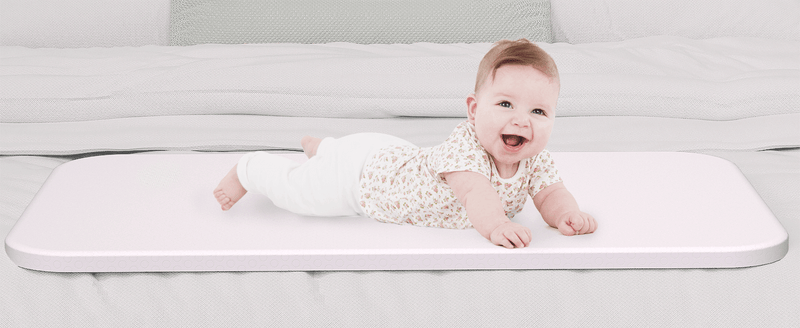As a new parent, one of the most common challenges you’ll face is trying to get your newborn to sleep independently. If your baby only sleeps on you or refuses to sleep in their bassinet at night, it can feel like you’re stuck in an endless cycle of holding them to sleep. While this might seem comforting for both of you in the short term, it can quickly become exhausting, especially as your baby grows. So, what can you do when your newborn won’t sleep unless held at night?

In this comprehensive guide, we’ll explore the reasons behind this behavior and provide expert tips on helping your baby develop healthier sleep habits. From understanding your baby’s sleepy cues to creating a soothing sleep environment, we’ll cover everything you need to know. We’ll also introduce a smart solution to help your baby transition to independent sleep, the Maydolly Smart Bassinet.
Why Won’t My Newborn Sleep Unless Held?
Before diving into solutions, it’s important to understand why your newborn may resist sleeping independently. There are several common reasons that may explain your baby's preference for sleeping on you or being held:
-
Comfort and Security: For the first few months of life, newborns are used to the constant warmth and comfort of being in the womb. Being held closely provides your baby with a sense of security and comfort, which is why they might resist sleeping on their own.
-
Sleep Associations: Babies often develop associations between specific actions and falling asleep. If your baby has gotten used to falling asleep while being held, they may struggle to sleep without that comforting connection. This is known as a "sleep association," and it’s a behavior that can be gradually changed with the right strategies.
-
Need for Soothing: Newborns have an immature nervous system, which means they may require extra soothing to fall asleep. Holding your baby close provides the necessary comfort, especially if they’re still adjusting to life outside the womb. It’s not unusual for newborns to need gentle rocking or movement to sleep soundly.
-
Overstimulation or Discomfort: If your baby is overstimulated or uncomfortable, they may not be able to sleep in their bassinet. Factors like room temperature, lighting, and even the feel of the bassinet can affect their ability to settle down.
-
Hunger or Discomfort: A baby who is hungry or has discomfort from gas or reflux may resist sleeping independently. Always check if your baby is fed, changed, and comfortable before attempting to put them down.
Understanding Your Newborn’s Sleepy Cues
One of the first steps in helping your baby sleep independently is recognizing their sleepy cues. Newborns are still learning how to communicate, but they will show subtle signs when they are getting tired. Being able to spot these cues can help you respond before your baby becomes overtired and difficult to settle.
Common sleepy cues include:
-
Rubbing eyes or face
-
Yawning
-
Becoming fussy or cranky
-
Looking away or losing interest in toys or people
-
Jerky or flailing arm movements
If you catch these cues early, you can help your baby transition to sleep more easily, whether that’s by holding them briefly or using other soothing techniques.
Tips for Getting Your Newborn to Sleep Without Being Held
Now that you understand why your baby might not want to sleep independently, let's explore practical strategies for encouraging them to sleep in their bassinet or crib.
1. Create a Soothing Sleep Environment
The environment plays a big role in helping your baby fall asleep. Make sure the room is dark and quiet, or use a white noise machine to block out background sounds. The temperature should be comfortable, ideally between 68-72°F (20-22°C). A consistent sleep environment helps your baby learn to associate their sleeping space with relaxation.
The Maydolly Smart Bassinet is designed with these factors in mind. It features breathable mesh walls, soothing lullabies, and adjustable rocking speeds to mimic the comfort and rhythm of being held.
2. Develop a Consistent Bedtime Routine
Newborns thrive on routine, even though they don’t fully understand it yet. A consistent bedtime routine will signal to your baby that it’s time to sleep. This could include activities such as:
-
A warm bath to help them relax
-
Gentle massage or quiet time with you
-
Soft lullabies or reading a short book
Make sure to follow the same routine every night. This consistency helps your baby feel secure and prepares them for sleep.
3. Introduce Gradual Sleep Transitions
If your baby is used to falling asleep in your arms, they might resist being placed in the bassinet. Start by holding them and gently rocking them in the bassinet for a few minutes. Over time, reduce the amount of holding and allow your baby to become accustomed to the bassinet while they are drowsy but not fully asleep.
This process, known as "gradual sleep training," can take time, but with patience, your baby will learn to associate the bassinet with sleep.
4. Try Swaddling or Sleep Sacks
Swaddling is a technique that mimics the feeling of being held, which can help your newborn feel secure and calm. Swaddling your baby snugly in a soft, breathable blanket or using a sleep sack can help them feel comforted while also preventing the startle reflex that might wake them.
Make sure to use breathable fabrics to avoid overheating. If you’re concerned about safety, choose a wearable blanket or sleep sack that allows your baby to move their legs freely.
5. Offer a Gentle Rocking Motion
The rocking motion that you naturally provide when holding your baby can also be replicated with a smart bassinet. Gentle rocking can help soothe your baby to sleep and mimic the comfort of being in your arms.
The Maydolly Smart Bassinet offers five adjustable rocking speeds to match your baby’s needs, ensuring that they are comfortably rocked to sleep with minimal effort from you.
6. Use a Pacifier (If Appropriate)
If your baby is using a pacifier, this can provide comfort and help them self-soothe. However, be mindful not to rely on the pacifier too much, as it could become another sleep association that might need to be broken later on.
7. Consider Sleep Training Methods
Once your baby is around 4-6 months old, you can start to implement gentle sleep training techniques. There are many methods available, such as the Ferber Method or the Chair Method, which can help your baby learn to fall asleep independently. However, be sure to consult your pediatrician before starting any formal sleep training.
The Maydolly Smart Bassinet: A Smart Solution for Sleep Struggles
If you're looking for a solution that can help your baby sleep more soundly on their own, the Maydolly Smart Bassinet is an excellent choice. With advanced features like:
-
Automatic Cry Detection: The bassinet detects your baby's cries and responds with soothing motions or sounds to help them calm down.
-
5-Speed Electric Adjustment: You can choose from five gentle rocking speeds to provide the perfect motion for your baby.
-
Breathable Mesh Walls: Promotes airflow and ensures your baby stays cool and comfortable throughout the night.
The Maydolly Smart Bassinet helps create a soothing sleep environment that encourages your baby to fall asleep independently, giving both you and your baby a more restful night.
Conclusion
If your newborn won’t sleep unless held at night, you're not alone. Many parents face this challenge, but with patience, consistency, and a few helpful techniques, your baby will gradually learn to sleep on their own. Recognizing sleepy cues, establishing a bedtime routine, and introducing gradual transitions are all effective strategies that can help. And for a smarter solution, the Maydolly Smart Bassinet offers the comfort, security, and soothing motion your baby needs to sleep soundly and independently.

